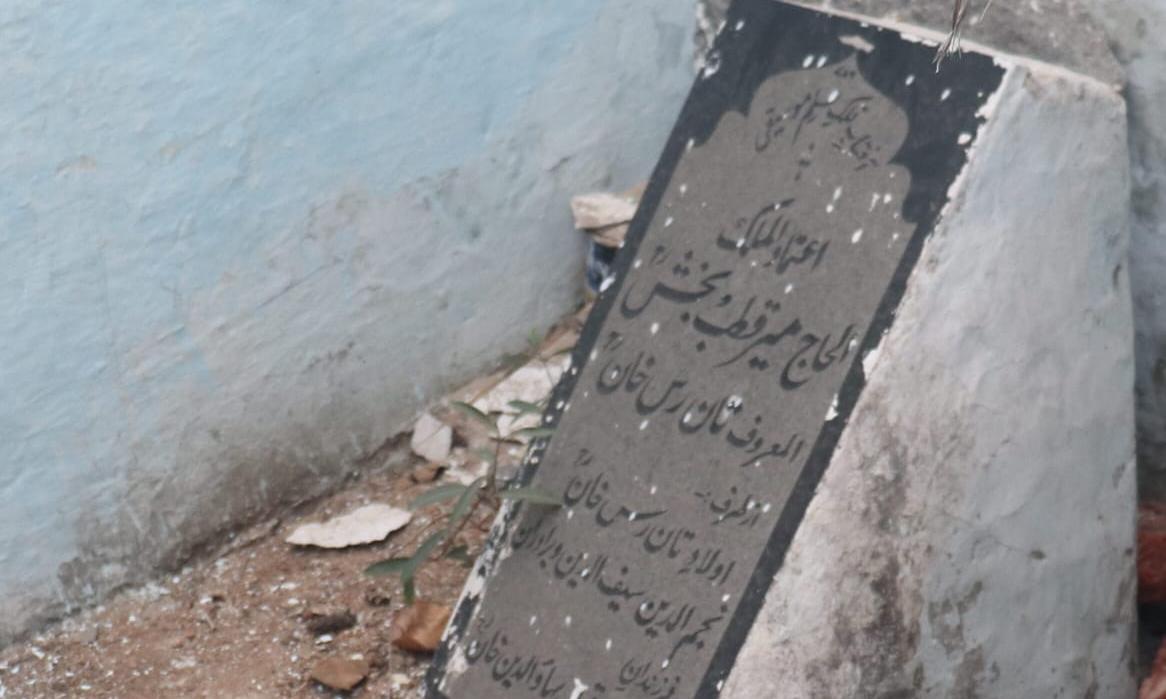The Last Mughal's Musician Lies in Hyderabad

Hyderabad: In a dilapidated grave near the Khamosh Shah Dargah in Nampally, Hyderabad, is the tomb of the last musician of the Mughal darbar, Ustad Mir Qutub Baksh 'Tanras Khan.'
Often overshadowed by Akbar's court musician Tansen, Tanras Khan’s contribution to Indian classical music is immense. He was both a musician at the court of the last Mughal emperor, Bahadur Shah Zafar II, and was also his music teacher.
His tomb is fading away in an isolated grave, with even local musicians unaware of his final resting place in their own city.
Musician and founder of Parichay Arts Foundation, Jaywant Naidu, learnt of Tanras Khan’s grave during the pandemic and has since tried to visit it with his friend, a qawwali singer, only gaining access on his second attempt. He has now made a public appeal to Chief Minister A. Revanth Reddy, urging him to restore Tanras Khan’s tomb and make it more accessible to the public.
“This is an appeal to bring back the lost glory of this towering figure in classical music by providing a proper resting place,” writes Jaywant Naidu. He is also advocating for an annual festival to honour Tanras Khan’s contributions to the city’s musical heritage.
Tanras Khan was also stated to be a key figure in the 19th century Indian classical music, known for his intricate khayal performances, occasional qawwali, and fast-paced taan, which earned him the title 'Tanras.' After the fall of the Mughal Empire, Tanras Khan moved from Gwalior to Hyderabad, spending his final years under the Nizam’s patronage.
“Things weren’t documented back then, but his composition ‘Ab Mori Naiya Paar Karo’ was one of his well-known works,” Jaywant Naidu said, adding, “Since he spent his final days in Hyderabad, the least we can do is remember him.”
To pay homage to Tanras Khan, Naidu is organising an event on October 24, featuring a talk and a qawwali performance by Ustad Hasnain Nizam, Tanras Khan’s great-grandson.
Ustad Hasnain Nizam, who is travelling to Hyderabad from Delhi for the event, revealed the broader societal indifference towards artists, as evidenced by the neglect of Tanras Khan’s grave.
As he put it, “His Mazar Sharif (grave) is not even accessible to us, his family,” he laments.
Despite their family’s enduring prominence in classical music, the power does not rest with them. Nonetheless, Nizam remains committed to reviving his ancestor’s legacy by adapting classical music to contemporary times.
“Generations change, and so must we. It’s important to adapt music to the times. Classical music, when fused with today’s popular instruments, can still resonate. For example, ‘Ae Ri Sakhi More Piya Ghar Aaye' has been performed with drums and guitar, proving that classical music still holds relevance for the younger generation,” he shares.
Nizam wishes for a dargah for his ancestor’s grave where people can recite fatiha and pay the artist the respect he deserves, or at the very least, a maqbara. “The opportunity to seek blessings from such figures, even by way of a simple visit to their tomb, adds a deeper connection for today’s musicians. The tomb should be accessible and not left in this neglected state,” says Jaywant Naidu, adding “People don’t even know his grave is here in Hyderabad.”
Death may not erase a person’s contributions, but fading memory can—erasing the traces of even the most remarkable individuals like Tanras Khan. Through the Sufi lens of Barzakh Tanras Khan’s tomb lies metaphorically in between-neither forgotten fully nor celebrated.

